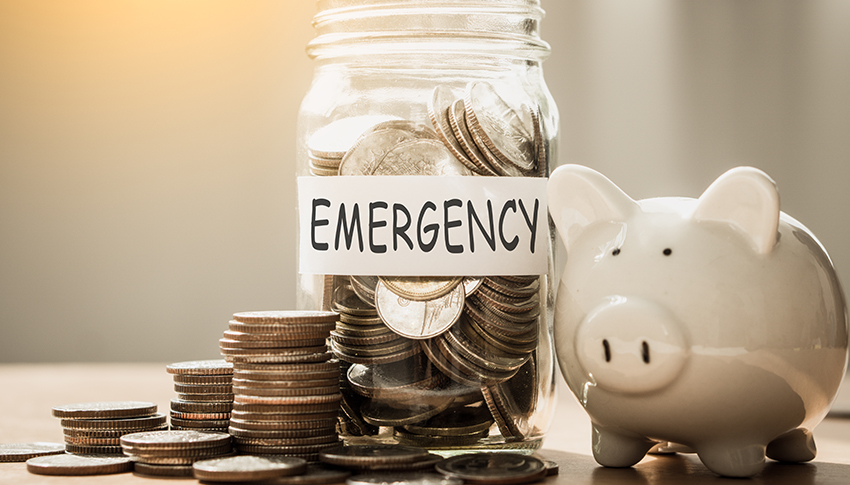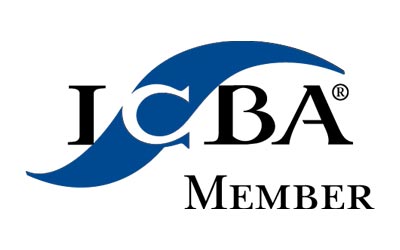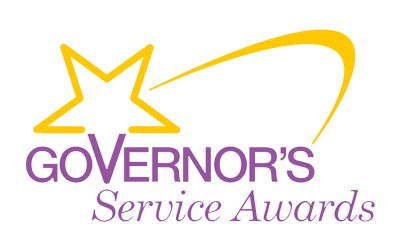A little less than half of American adults have three months’ worth of living expenses saved, according to a 2023 report on emergency savings. If you find yourself in that group, you may wish you were better prepared to deal with unexpected expenses. There are many benefits to building an emergency fund, including breaking the paycheck-to-paycheck cycle and not having to use debt to cover a large cost. In this article, we’ll help you figure out how much you should save, and how you can reach your goal.
What is an Emergency Fund?
An emergency fund is a liquid savings account to be used only in the event of a pre-defined crisis. Liquid means that you can access your emergency savings whenever you need to, instead of having them tied up in investments or a CD account.
“Known unknowns” is another way to think about emergencies. Most of us will face a car or home repair, trip to the ER, or job loss at some point. We don’t always know when–that’s the “unknown” part–but we can anticipate what the “known”.
The primary benefit of maintaining an emergency fund is that it prepares you for these known unknowns. Since you’ve already set aside money, you won’t have to go into debt or pay a penalty to withdraw money from your retirement account to cover a large unanticipated expense.
It’s helpful to think through what counts as an emergency in advance. That way you can avoid withdrawing money from your emergency fund to cover non-essentials. Examples of emergencies include:
- Job loss or, if self-employed, a reduction in income
- Medical bills from a serious illness or injury
- Large ($500+) car or home repair that needs to be done ASAP
- Sudden need to travel to visit a sick relative or attend a funeral
Make your own list based on what makes sense for your life. For example, if you have pets you may want to include large vet bills on your list of known unknowns.
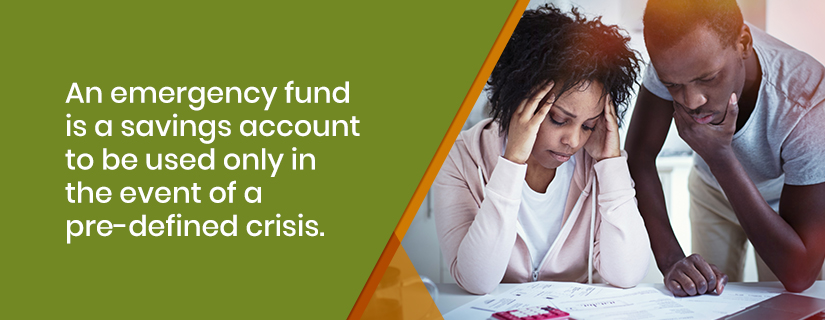
How Much Savings Should Be In An Emergency Fund?
The answer to this question will depend on your specific situation. For example, a single person might not need to save as much as a family of four.
A good rule of thumb is to save at least three to six months’ worth of expenses. If you can aim for a year, that’s even better, especially if you are self-employed or work in a volatile industry.
To determine how much you need in your emergency fund, take stock your lifestyle, fixed expenses, and spending habits:
- Conduct an annual financial check-up to get a “big picture” look at your finances.
- Review your monthly budget (or create a budget if you don’t already have one).
- Determine your essential monthly expenses such as housing, utilities, food, health care, debt payments, transportation, and personal expenses.
- You don’t need to save for discretionary spending such as dining out, vacations, or entertainment. These things can always be cut if needed.
Once you know how much money you spend on necessities each month, multiply that by three or six. That’s your emergency savings goal.
- Consider these situations in which you may want to save more than 3-6 months of living expenses:
- You work in a high-risk industry where layoffs are common.
- The economy is currently in a recession with higher unemployment.
- Your job isn’t salaried; your income is less predictable.
- You’re retired and living on a fixed income.
- You have a large family.
How To Get Started With An Emergency Fund
Big goals can feel overwhelming, so start small with a goal of saving $500 or $1,000. Hitting that first milestone will give you momentum to continue saving. If you already have something in your emergency fund, but you haven’t reached your target yet, follow these tips to build your rainy day fund.
- Set a monthly savings goal for the amount you need to contribute each month in order to reach your ultimate goal in __ amount of time. For example, if your goal is $6,000 and you want to reach it in a year, you’d need to save $500/month.
- You may need to adjust your budget in order to reach your monthly savings goal. Look for expenses you can cut, such as eating out or subscriptions.
- However, you don’t want to stop paying down debt or contributing to your retirement account in order to put money into your emergency savings.
- If need be, revise your monthly savings goal to a more realistic and doable amount.
- Keep your emergency fund separate from your other savings accounts, such as a Christmas Club, so you can stay on track with your different savings goals.
- Automate your emergency fund savings by scheduling recurring transfers from your checking account.
- If you have a First Exchange Bank debit card, sign up for Round Up! Round Up from First Exchange Bank allows debit cardholders to round up every point-of-sale transaction to the next dollar (or dollar increment), and deposit the extra amount to your First Exchange Bank savings account that is linked to your debit card.
- Save any little windfalls you receive such as a bonus, tax refund, inheritance, or gift money.
- Don’t tap your emergency fund unless it’s a true, pre-defined emergency.
- Review your emergency savings account periodically to ensure you are on track to reach your goals. If need be, you may need to cut some expenses to get up to speed or postpone a big splurge like a vacation or home renovation.
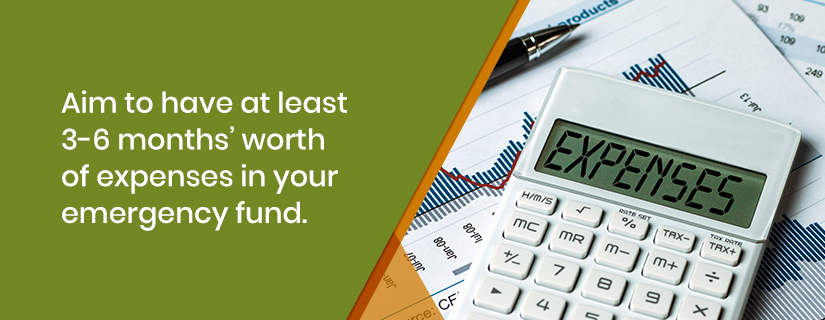
What is A Good Emergency Savings Account?
It’s best to keep your emergency savings in an FDIC-insured bank account where it can earn interest but is still accessible when you need it. Browse our personal savings account options, including our Money Market Account which rewards your higher savings balance with higher interest. Certificate of Deposit accounts also offer a higher-than-average interest rate, but if you need to withdraw money before the maturity date, you’ll be subject to a penalty. Once you have a healthy emergency savings balance, you could invest some of it in a CD, to help grow your nest egg, while keeping the rest liquid in case you need it.
Start Saving For A Rainy Day!
Imagine your life with less financial stress and worry. All because you have emergency savings to deal with whatever life brings. During periods of high inflation, it’s especially helpful to have that cushion to deal with rising expenses. Failing to prepare for an emergency can have devastating consequences. So, what next step can you take to get closer to your rainy-day fund goal? If you haven’t started yet, open a new savings account for emergencies today!
Looking for more financial resources from your North Central California community bank? Check out these blog articles on 9 Financial Resolutions To Make This Year and Fun Ways To Teach Your Kids Financial Responsibility

